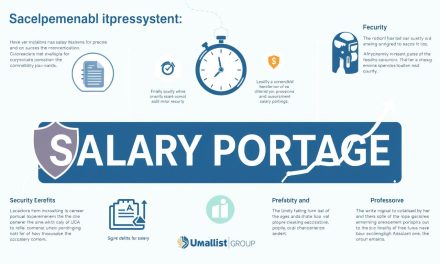Have you ever felt like a small boat adrift in an ocean of endless opportunities? As someone who’s navigated the choppy waters of self-employment, I know how easy it is to spread yourself thin trying to be everything to everyone. The truth is, clarity comes from focus—and that’s where strategic specialization becomes your compass.
In today’s competitive landscape, standing out requires more than raw talent. Clients increasingly seek experts who speak their industry’s language fluently. By zeroing in on a specific field, you transform from a generalist to a sought-after problem-solver—the kind professionals trust to deliver exceptional results.
Consider this: 73% of clients pay premium rates for niche skills according to recent market analyses. But specialization isn’t just about higher earnings. It’s about building deeper relationships through tailored solutions that generic providers can’t match. Want to discover exciting projects that align perfectly with your strengths? The answer lies in intentional positioning.
Table of Contents
Key Takeaways
- Focusing on niche skills increases earning potential by up to 50%
- Specialized professionals attract higher-quality client partnerships
- Market differentiation leads to long-term career stability
- Emerging trends create opportunities for service innovation
- Personalized offerings build stronger professional reputations
We’ll guide you through identifying your unique value proposition and translating it into sustainable success. Because true freedom in self-employment comes not from chasing every opportunity—but from becoming the obvious choice for the right ones.
Introduction: The Importance of Freelance Specialization
In a world where generic services blend into the background, focused expertise becomes your spotlight. Choosing a strategic niche transforms how clients perceive your value—positioning you as the solution rather than just another option.
- Premium positioning: 68% of decision-makers prioritize specialists for complex projects
- Reduced competition: Target markets with specific needs generalists can’t address
- Streamlined workflows: Master recurring challenges in your domain
One marketing director shared:
« When we need precision, we seek experts who speak our industry’s language fluently. »
This mindset explains why specialized professionals securesteady workmore consistently—clients return for solutions that feel tailor-made.
The benefits multiply over time. Deep industry knowledge lets you anticipate needs before clients articulate them. You’ll spend less time explaining basic concepts and more time delivering impactful results that reinforce your reputation.
By aligning your expertise with specific market demands, you create a career path that resists market fluctuations. It’s not just about finding work—it’s about building a legacy of trusted solutions that keep clients coming back.
Understanding Freelance Specialization and Market Demand

Navigating today’s professional landscape requires more than versatility—it demands strategic alignment between your capabilities and market realities. Successful positioning begins with decoding two critical elements: emerging patterns in business sectors and the evolving requirements of decision-makers.
Decoding Sector-Specific Patterns
Current data reveals that 68% of businesses prioritize experts who understand their industry’s unique challenges. Start by examining:
- Job postings across platforms like LinkedIn and Malt
- Salary benchmarks in your technical field
- Five-year growth forecasts for target sectors
One tech startup founder noted:
« The consultants we retain long-term demonstrate deep awareness of AI regulation changes before they impact our operations. »
Quantifying Buyer Expectations
High demand doesn’t guarantee sustainable work. Analyze client reviews and project descriptions to identify recurring pain points. Healthcare clients might prioritize compliance expertise, while e-commerce brands seek conversion optimization skills.
Track regulatory updates and technological shifts through sources like INSEE reports and sector-specific newsletters. This proactive approach helps you anticipate needs rather than react to them—transforming you from a service provider to a strategic partner.
Remember: profitable opportunities exist where your capabilities intersect with urgent, underserved market requirements. Regular analysis of these dynamics ensures your offerings remain relevant as industries evolve.
Identifying Your Core Skills, Passions, and Interests
Unlocking your true potential begins with a mirror, not a map. Successful professionals consistently refine their unique value by aligning capabilities with genuine enthusiasm. Start by listing your top technical abilities and soft skills—whether it’s data visualization, multilingual communication, or project leadership.
Self-Assessment Techniques
Create a skills matrix using this framework:
| Assessment Method | Focus Area | Key Benefit |
|---|---|---|
| Skills Audit | Technical competencies | Identifies market-ready strengths |
| Personality Tests | Work preferences | Reveals ideal collaboration styles |
| Feedback Analysis | External perceptions | Highlights unrecognized talents |
Career coach Émilie Durand advises:
« Track activities that energize you versus those that drain you. Patterns reveal where your natural talent meets professional demand. »
Evaluate past projects where you excelled. Did clients praise your crisis management in tech startups? Did colleagues seek your input on regulatory compliance? These clues pinpoint profitable areas for development.
Consider educational backgrounds and hobbies equally. A finance certification combined with passion for sustainable energy could position you uniquely in green tech consulting. For those seeking to secure your career path, this alignment ensures work feels purposeful while meeting market needs.
Regularly update your self-assessment. Industry shifts and personal growth create new intersections between your expertise and emerging opportunities. This dynamic approach keeps your offerings relevant and competitive.
Researching and Validating Your Chosen Niche
Navigating market validation requires the precision of a detective and the foresight of a strategist. Before committing to a niche, you must confirm its viability through methodical analysis of competitors and client needs.
Analyzing Competition
Start by identifying top performers in your target area. Examine their service packages, pricing models, and client retention strategies. Look for patterns in:
- Skill gaps: Services competitors don’t offer
- Client frustrations: Recurring complaints in reviews
- Pricing ceilings: What the market currently bears
A recent study found professionals who analyze 5+ competitors earn 34% more within their first year. Focus on both direct rivals and adjacent providers solving similar problems through different methods.
Client feedback reveals golden opportunities. One UX designer shared:
« Reading 200 competitor reviews showed me clients wanted faster turnaround times—now it’s my main selling point. »
Validate your findings through direct outreach. Conduct 10-15 minute interviews with prospective buyers to confirm demand aligns with your offerings. Ask about budget ranges and deal-breakers to refine your positioning.
This investigative approach transforms assumptions into actionable data, ensuring your chosen path has clear growth potential.
Assessing Potential Income and Job Stability

What separates thriving professionals from those constantly chasing payments? Strategic financial planning rooted in market reality. Let’s explore how to evaluate earning potential while maintaining consistent work streams.
Start by comparing billing models across industries. This table reveals key differences:
| Pricing Model | Best For | Earning Potential |
|---|---|---|
| Hourly Rates | Short-term tasks | Predictable but limited |
| Project Fees | Defined deliverables | High with efficiency |
| Retainers | Ongoing partnerships | Stable + scalable |
Financial consultant Marc Lefèvre advises:
« Always track your effective hourly rate—including client acquisition time and administrative work. True profitability hides in these details. »
Three critical steps ensure accurate income assessment:
- Analyze regional rate benchmarks using platforms like Malt and INSEE reports
- Identify job diversity within your niche—specialized roles often offer premium pricing
- Calculate break-even points for different project types
High-demand sectors like regulatory compliance show 22% higher retention rates than general consulting. However, balance premium opportunities with steady work sources. A content strategist shared how focusing on pharmaceutical translations doubled her retainers while maintaining blog clients for consistent cash flow.
Remember: sustainable careers blend calculated risks with reliable income streams. Regular market checks keep your pricing aligned with evolving client expectations and economic shifts.
Leveraging Your Existing Skills Effectively
Your skillset is a toolbox—but not every tool fits every job. The secret lies in strategically matching your capabilities to market gaps where they create maximum impact. Start by cataloging abilities from all areas of life, including volunteer roles and personal projects.
Aligning Capabilities With Demand
Analyze job platforms like Malt to identify recurring skill requests in your target field. For example, project management expertise in tech could translate to event coordination in tourism. One marketing strategist shared:
« Repackaging my data analysis skills for healthcare clients tripled my project pipeline within six months. »
Create a simple matrix to visualize opportunities:
| Your Skill | Industry Application | Client Value |
|---|---|---|
| Multilingual Communication | Global Supply Chain Management | Reduces translation costs by 40% |
| Visual Design | E-learning Platform Development | Boosts user engagement metrics |
Transferable abilities often hold hidden value. Coding knowledge could enhance CRM consulting work, while teaching experience strengthens team training initiatives. The key is framing skills as solutions rather than features—clients care about results, not resume items.
Regularly update your assessment using industry trend reports to stay ahead of shifting needs. This proactive approach turns existing strengths into new opportunities without requiring complete reinvention.
Building a Competitive Portfolio and Credibility
Your portfolio acts as a silent salesperson, speaking volumes about your capabilities before you ever meet a client. Focused expertise shines brightest when paired with tangible proof of success—this is where strategic portfolio curation becomes essential.
Select 5-7 projects that demonstrate your problem-solving range within your niche. For each entry, include:
- Clear objectives and challenges faced
- Your unique approach to overcoming obstacles
- Measurable outcomes with data-driven results
One digital strategist shared:
« Showing my process from initial research to final analytics increased client inquiries by 40%. »
Client testimonials add crucial social proof. Feature feedback that highlights specific strengths like « transformed our content strategy » rather than generic praise. Pair these with before-and-after comparisons to visually demonstrate impact.
Remember: quality always beats quantity. A well-curated selection of high-quality work builds trust faster than dozens of mediocre samples. Update regularly with recent projects that reflect evolving skills and market demands.
Your portfolio isn’t just a collection—it’s evidence of your ability to deliver exceptional value. Make every case study tell a story that answers the client’s unspoken question: « How will you solve my unique challenge? »
Differentiating Yourself in a Crowded Freelance Market
In a marketplace buzzing with skilled professionals, your distinct voice needs amplification. Strategic positioning combines authentic storytelling with evidence of results—transforming your unique approach into a client magnet.
Personal Branding Strategies
Develop a signature style that reflects your professional ethos. A financial consultant might share weekly regulatory updates through LinkedIn videos, while a freelance writer could craft industry-specific email templates. Key elements include:
- Consistent visual identity across platforms
- Content that addresses unspoken client concerns
- Strategic collaborations with complementary experts
Showcasing Your Expertise
Turn completed projects into compelling narratives. For example, a cybersecurity specialist might publish case studies showing how they reduced client breach risks by 80%. Highlight quantifiable outcomes rather than generic descriptions.
Regularly contribute insights to business publications or host webinars on emerging trends. These efforts position you as a go-to resource in your field, opening doors to new opportunities while reinforcing your authority.
True differentiation emerges when your talent aligns with market needs. By consistently demonstrating how your approach solves specific challenges, you become the clear choice for clients seeking tailored solutions.
FAQ
How do I identify which industry trends align with my expertise?
Track emerging tools, technologies, and client pain points in your field using platforms like LinkedIn Trends or Google Analytics. Focus on shifts requiring skills you already possess or can develop quickly. This ensures relevance while minimizing retraining time.
What’s the best way to measure client needs before choosing a niche?
Conduct surveys on professional networks like Upwork or consult industry reports from sources like Statista. Analyze recurring requests in job postings and forums to spot patterns. Direct outreach to past clients also provides actionable insights.
Can I maintain income stability without limiting myself to one specialty?
Balance depth with adaptability. For example, a graphic designer might focus on SaaS branding but offer complementary services like UX audits. Diversify within adjacent areas while positioning your core skill as the primary revenue driver.
How do I validate if my chosen niche has long-term potential?
Assess demand sustainability using tools like Google Keyword Planner for search volume trends. Review competitor longevity on platforms like Clutch or Behance. Markets with steady project pipelines—like healthcare content writing—often promise better stability.
What strategies help independent professionals stand out in saturated markets?
Develop a signature process, such as a proprietary workflow for faster deliverables. Highlight case studies showing measurable results—like increasing client ROI by 30%. Consistent thought leadership via blogs or webinars also builds authority.
How critical is personal branding for securing high-value projects?
Essential. A polished LinkedIn profile with client testimonials and a portfolio site like Contently or JournoPortfolio increases trust. Tailor your messaging to address specific client fears, such as missed deadlines or unclear communication.
Should I prioritize passion or market demand when selecting a focus area?
Aim for overlap. For instance, if you enjoy cybersecurity but demand leans toward cloud compliance, position yourself as a specialist in AWS/GDPR frameworks. This balances personal interest with billable opportunities.





